|
Last World War Wednesday, we looked at the use of ice cream in the U.S. Navy during the First World War, especially aboard hospital ships. Now it's time for a reprise! By the Second World War, ice cream was firmly entrenched aboard Naval vessels. So much so, that battleships and aircraft carriers were actually outfitted with ice cream machinery, and by the end of the war the Navy was training sailors in their uses through special classes. The above propaganda poster, courtesy the National Archives, outlines all of the requirements to build a battleship. "Your Battleship and Her Requirements" may have been targeted toward factory workers, but I think it is more likely this poster was designed to impress upon ordinary Americans the extraordinary amount of materials and supplies needed to keep a battleship in fighting trim. What I found particularly interesting, was that among the supplies listed, alongside fruits and vegetables and meat and even candy, was 60,000 quarts of ice cream! Smaller vessels, such as destroyer escorts and submarines, did not have the space for their own ice cream making machinery, although they did have freezers. In fact, it became common for destroyer escorts and PT boats to rescue downed pilots (the aircraft carries were too big for the job) and "ransom" them for ice cream. Last week a brand new food podcast debuted for American Public Television called "If This Food Could Talk," and I'm so pleased to say I was featured in the first episode, "Frozen in Time: Ice Cream and America's Past." I had a blast doing the research for that episode's interview, which has inspired these two recent World War Wednesday posts. Have a listen if you want to learn more about ice cream in American history, and especially the story of ice cream in the Navy. But while I was doing the research, I kept running across references to ice cream as a health food! The National Dairy Council really leaned into the notion of ice cream and the armed forces. This advertisement reads, "There's a reason why the U.S. Navy serves Ice Cream. America's favorite dairy food - Ice Cream - is an important source of vitamins, proteins and minerals." The ad goes on: "Navy menus don't just happen! Every food included in the diet of Navy personnel, ashore or afloat, is there for a purpose. It is there because it has been okayed by the staff of experts at the Subsistence Research Laboratory of the U.S. Navy in Chicago for making an important contribution to the health, strength, and morale fighters must have to win! "These highly skilled and trained technicians at the laboratory know every condition under which the men live - know their requirements - and make sure exactly what each food will do for those men before it is approved. "That is why it is significant that ice cream ranks so high on Navy menus. It is not only a favorite food, but it also supplies valuable vitamins, proteins, and minerals. For that reason, wherever practical, the Navy gets ice cream! "Throughout the world - over the seven seas - the talents of the Subsistence Research Laboratory of the U.S. Navy are directed to keeping our Navy a strong, healthy, hard-hitting force; making sure it gets the foods the men like - the foods they need for victory! "Ice Cream Is a Fighting Food "Ice cream is a favorite with all branches of our armed forces - and it is important that they get this valuable food. So fi you aren't always able to get all the ice cream you want - remember, you're 'sharing' this nutritious food with our fighters." The National Dairy Council might be just a SMIDGE biased in this regard, but certainly the federal government ranked milk, and by extension milk products, very highly in terms of nutrition during the Second World War, notably as part of the Basic 7 nutrition recommendations. This was almost certainly a holdover from the Progressive Era's take on milk as the "perfect food" - combining proteins, carbohydrates, and fats all in one. We see this in another advertisement, this time by the National Dairy Products Corporation. The National Dairy Council is an industry-funded research and marketing organization. But the National Dairy Products Corporation would later become Kraft Foods. "Here's what one leatherneck dreams about! "One Marine's dream of the post-war world is a mountain of strawberry ice cream. He wrote his girl from Guadalcanal that he wants it three times a day, every day for five years. In standard servings, that's over 900 quarts! "Strawberry ice cream was a symbol, of course, to a hot, tired fighting man in a fox-hole - a symbol of his home town and the corner drug store - a symbol of America. It must have appealed to lots of folks, for many newspapers carried the story. "There are good reasons why ice cream is on Army menus regularly - good reason why busy war workers eat so much of it. It is more than a delicious dessert - it's a valuable food - rich in vitamins and calcium. "Right now, of course, ice cream must come from the same milk supply that furnishes milk, cream, butter and cheese to soldiers, civilians and allies alike. That means less ice cream for your family's use. If you'll be content with your fair share - if you'll accept part of your order in fruit ices - you can continue to enjoy ice cream. "And we'll continue to improve ice cream processing and packaging - controlling its quality - keeping it pure and good. "We'll continue our intensive laboratory research... developing important new products from milk... bringing to America's fighters, workers and friendly allies the full benefits of nature's most nearly perfect food." Here you can see the "perfect food" rhetoric in action! And interestingly, this one touts the role of ice cream in the Army as well. In my opinion ice cream, for all the rhetoric about nutrition, had far more to do with morale than anything else. But there is some truth to the idea that as a dessert it was superior to cake or pie. For one thing, ice cream does have some protein, in addition to a decent amount of fat. Full fat dairy is generally proven to be more filling and satisfying and protein and fat slow down the absorption of sugar directly into the bloodstream, making the "energy-giving" properties of carbohydrates longer-lasting and less likely to make you crash (unlike cake and cookies). That being said, viewing ice cream as a health food is questionable today. But in the period, the discoveries of vitamins and minerals like calcium were cutting-edge, and any food containing those essential nutrients was considered good for you. Ice cream also fit neatly into ideas (unconscious or otherwise) of White supremacy and American (i.e. Anglo-Saxon) culture. As the National Dairy Products Corporation marketing team wrote, ice cream was "a symbol of America." When combined with soda fountains (the wholesome, if sugary, alternative to saloons and beer halls), ice cream seemed to represent the best of America - slim, good-looking, young, White America, that is. Today, ice cream's modern accessibility has given us ice cream alternatives aplenty, especially for folks who can't consume dairy. Ice cream's ubiquity has also meant some of its luster has faded. But at a time of extreme stress - the violence of the theater of war, the privations of home front rationing, the push to mobilize for total war, the fear of invasion - ice cream provided a moment of bliss in the midst of uncertainty. Ice cream is still an essential tradition aboard Naval vessels today. When you're miles from home for months at a time, anything that seems like a treat gives morale a boost. It's still a treasured treat in our household, whether homemade or store bought (if you find yourself in upstate New York - do yourself a favor and seek out Stewart's Shops. They have the best commercial ice cream around). What does ice cream mean to you? The Food Historian blog is supported by patrons on Patreon! Patrons help keep blog posts like this one free and available to the public. Join us for awesome members-only content like free digitized cookbooks from my personal collection, e-newsletter, and even snail mail from time to time! A special patrons-only post is coming tomorrow with more on ice cream in World War II - this time featuring Elsie the Cow! Join now for as little as $1/month.
Don't like Patreon? Leave a tip!
1 Comment
I don't remember when I first encountered "Indian pudding." Derived from the Colonial name for cornmeal - "Indian meal" - it's an iconic dish of New England, though it isn't often made anymore. Combining Indigenous foodways, European cooking techniques, and molasses, a ubiquitous sweetener made cheap by the brutal labor of enslaved Africans, Indian pudding reflected the kind of stick-to-your-ribs cooking common in the Colonial period when people ate less frequently and engaged in harder labor, and with less access to heating than they do today. The above advertisement by Sun-maid Raisins from 1918 is a good illustration of this. "Note How Plain Foods Become Enticing," the ad reads, showing how Indian Pudding could be spiced up with raisins, and then goes on to show just how inexpensive raisins were. Historically, raisins were rather expensive, and had to be stoned (remove the seeds) by hand, a labor-intensive step that continued until the early 20th century. By the time Sun-maid is advertising in 1918, you no longer had to stone raisins - they came seedless. Clearly Sun-maid was trying to convince people that raisins were a more economical purchase than previously believed. Also, the use of Indian Pudding to illustrate the "plain foods" shows how it was viewed by most Americans at that time - plain, cheap, and filling. Indian pudding also fit nicely into rationing suggestions to use less sugar, refined white flour, and fats. With its ingredients of cornmeal and molasses, Indian pudding fit the bill. I first ran across a recipe for Apple Indian Pudding when researching the history of the Farm Cadets in New York State. The article right next to it was about the establishment of the Farm Cadet Corps under the State Military Training commission. Published in the Buffalo Evening News on April 19, 1917, just two weeks after the United States entered the war, it was included as part of a column called "Lucy Lincoln's Talks" and was one of many recipes. Although the United States Food Administration was not yet formed and no rationing recommendations had been issued, President Wilson had been publicly discussing the role of food in the war effort. Throughout the First World War, the United States Food Administration and home economists hearkened back to the Colonial period for several reasons. First, it appealed to Americans' sense of patriotism. Following the American Civil War, Northern reformers made a concerted effort to re-unite the nation and define what it meant to be American. Thanks to the unconscious bias of white supremacy, that idea became closely connected to New England and the mythology around the Pilgrims and the founding of the nation (despite the fact that Spanish Florida, Virginia, parts of Canada, and even New York had been settled earlier). Second, hearkening back to the Colonial period allowed ration supporters to encourage the substitution of non-rationed food items like cornmeal and molasses which had deep Colonial roots, for rationed foods like refined white flour and refined white sugar, which were needed for the war effort. Third, these ingredients were often very inexpensive. By connecting them to the honored founders of the country, food reformers could convince middle and upper class people to eat what may have been previously only associated with the poor and working class, in the name of patriotism. Despite the lack of actual rationing recommendations at this point, the recipe for Apple Indian Pudding would have fit very nicely into the requirements. It used cornmeal, which saved wheat. It used molasses and apples for sweetener, which saved sugar. It used two quarts of milk, which would help use up the milk surplus and add protein. It was also extremely inexpensive and filling, which meant it had appeal for folks on a budget or with large families. The recipe does, however, call for 1/3 cup of butter, which would become one of the recommended ration items in just a few months. Apple Indian Pudding RecipeI have made Indian Pudding before for a talk, and it's lovelier than you'd think. Here's the original recipe: "Scald 2 quarts of milk in a double boiler. Sprinkle in 1 cup of Indian meal, stirring all the time, and cook 45 minutes, stirring frequently. Remove from the fire, add 1/3 cup of butter, 1 cup of molasses, 2 teaspoons of salt, 1/2 teaspoon each of ginger and grated nutmeg, and 1 quart of pared, cored, and quartered apples. Turn into a buttered baking dish and bake three hours in a slow oven." And here's a modern translation: 8 cups (or a half gallon) whole milk 1 cup cornmeal 1/3 cup butter 1 cup molasses 2 teaspoons salt 1/2 teaspoon ground ginger 1/2 teaspoon grated fresh nutmeg 3-4 apples Preheat the oven to 300 F. In a double boiler or heavy-bottomed pot, heat the milk, but do not boil. Once hot, slowly whisk in the cornmeal and cook, stirring frequently, for 30-45 mins or until the cornmeal is fully cooked and has absorbed the milk. Remove from heat and while hot, stir in the butter, molasses, salt, and spices. Peel, core, and slice the apples thickly. Stir the apple slices into the cornmeal mixture, and tip it all into a buttered glass or ceramic baking dish. Place in the oven and let bake for 3 hours, uncovered. Serve hot or warm plain (ration-friendly) or with vanilla ice cream or unsweetened liquid cream (not-so ration-friendly). Although the original recipe calls for quartered apples, most modern apples are very large, and a quarter might be too big, which is why I suggest slicing them instead. If you're in an area of the world that gets cold in the fall and winter, Apple Indian Pudding is the perfect, homey dessert to attempt on a day when you'll be puttering around the kitchen or the house all day. Pop some baked beans in with it if you really want a traditional New England supper (and a ration-friendly one!). It really does take three whole hours to bake (other versions included steaming like plum pudding), but the long, slow heat turns the normally crunchy cornmeal into melting softness. There's a reason why it's still so popular in New England. If you want to know more about the history of Indian Pudding, including how to make a historic recipe, check out my lecture below! The Food Historian blog is supported by patrons on Patreon! Patrons help keep blog posts like this one free and available to the public. Join us for awesome members-only content like free digitized cookbooks from my personal collection, e-newsletter, and even snail mail from time to time! Don't like Patreon? Leave a tip! Welcome to The Food Historian's 31 Days of Halloween extravaganza. Between social media (Facebook, Instagram, Twitter) and this blog, I'll be sharing vintage Halloween content nearly every day this month! Home Halloween parties were extremely popular during the first decades of the 20th century, and although the First World War did slow some of the celebrations, it didn't entirely stop them. On October 28, 1917, the Poughkeepsie Eagle published a full-page spread celebrating Halloween. In it, "Hints for the Hallowe'en Lunch" outlined just how locals could celebrate even with voluntary restrictions on meat, butter, white flour, and sugar. The "Jack-o'-Lantern Salad" features inexpensive salt herring and potatoes, the loaf cake features just one cup of wheat flour with brown sugar and raisins for sweetener, and the "Priscilla Pop Corn" sounds very much like caramel corn! This lunch was likely intended for adult women rather than children, though young women may also have been the intended audience. A composed vegetable salad with sandwiches was typical fare for club women and other ladies who lunched. I've transcribed the whole article below for your reading pleasure. Hints for the Hallowe'en Lunch"Table decorations for a Jack'o'Lantern Jubilee must necessarily include pumpkins big and pumpkins little. Both kinds are introduced into the attractive witches cauldron of the illustration. Its value is increased when an assortment of prophecies is put into the kettle to be distributed to the guests when the strong black coffee is served. "Hallowe'en menus usually include the homely cider and doughnuts, chestnuts and apples which belong to other harvest home celebrations. "The following menu is plain and substantial and just a little different. "Jack-o'-Lantern Menu Jack-o'-Lantern Salad Brown Bread Sandwiches Fruit Loaf Cake Priscilla Pop Corn Cider or Coffee "Jack-o'-Lantern Salad "Soak salt herring in lukewarm water and drain. Cook in boiling water for fifteen minutes. When cool, separate into flakes and add an equal quantity of cold boiled potato, and one-fourth quantity of chopped, hard-boiled eggs. Mix with French dressing [ed. note: vinaigrette] and chill in refrigerator until serving time. Beat one-fourth cupful of cream until stiff and mix with it two tablespoons chopped pimentos. Mix with equal portion of mayonnaise dressing and combine with the salad. Serve on lettuce leaves, slightly flattening the heap on top to receive the "Jack-o'-Lantern," which is a small full moon face cut from a very thin slice of American cheese, the eyes marked with bits of clove, and the nose and mouth by thing strips of pimento. Brown bread sandwiches, with a filling of chopped peanuts is served with this salad. "Raised Fruit Loaf. "One cupful of butter, two cupsful brown sugar, two eggs, two cupsful of bread sponge, two teaspoonsful cinnamon, one teaspoonful clove, two teaspoonsful soda, one teasponful salt, two cupsful raisins, one cupful flour. "Cream butter and add slowly, while beating constantly sugar, then add well-beaten eggs, bread sponge, spice, soda and salt, and flour mixed and sifted, and raisins, cut in half and dredged with flour. Turn into buttered and floured oblong pans and let rise two and one-half hours and then bake for an hour. "Priscilla Popped Corn. "Two quarts of popped corn, two tablespoonsful butter, two cupsful browned sugar, one-half cupful water, one-half teaspoonful salt. Put butter in saucepan, and when melted add sugar, salt and water. Boil sixteen minutes and pour over popped corn, coating each grain thoroughly." What do you think? Would you like to attend such a lunch? I know I would! Even the herring potato salad sounds good and distinctly Scandinavian, although not particularly Halloween-ish. Priscilla popcorn, however, is definitely going on the to-make list! The Food Historian blog is supported by patrons on Patreon! Patrons help keep blog posts like this one free and available to the public. Join us for awesome members-only content like free digitized cookbooks from my personal collection, e-newsletter, and even snail mail from time to time! Don't like Patreon? Leave a tip! Welcome to The Food Historian's 31 Days of Halloween extravaganza. Between social media (Facebook, Instagram, Twitter) and this blog, I'll be sharing vintage Halloween content nearly every day this month! We're revisiting the October, 1917 issue of the Ladies' Home Journal this week with some very fall-ish recipes. The beautiful color plate featured in the magazine contains a number of recipes for baked goods using wheat substitute flours. Refined white flour was a shelf stable product necessary for the war effort to feed both American troops and our French, British, and Belgian allies. But the 1916 wheat harvest was poor throughout the Americas, and the United States joined the war in April, 1917 - too late to increase wheat crops for the year. Herbert Hoover, United States Food Administrator, asked Americans to voluntarily reduce their consumption of wheat (along with meat, fats, and sugar). This page of helpful recipes bears Hoover's portrait and purportedly a quote from him as well, reading "Every woman who serves in her home these good things to eat will, in just that degree, by conserving wheat flour, help win the war." Not the snappiest quote from Hoover, but the emphasis on using wheat substitutes, especially corn, were popular at the time. Although rationing was voluntary, not mandatory, many Americans tried to make their baking more patriotic and reduce their reliance on refined white flour. Because this is from 1917, we don't have mandatory sugar rationing, as we see by the fall of 1918. But cornmeal, rice, rye flour, graham flour (today sometimes called entire wheat flour - made from whole wheat berries and different from modern whole wheat flour, which is white flour with some wheat germ added back in), oatmeal and oat flour, and barley flour were all used to help reduce the reliance on white flour. Of them all, cornmeal and rice were the most plentiful. In the Halloween spirit, I've transcribed two of the most festive recipes on the list - the unimaginatively named "Corn Muffin Dessert with Spiced Apples" and "Pumpkin Biscuits." Enjoy these seasonal treats! Corn Muffin Dessert with Spiced ApplesCut four medium-size apples into eighths, and core but do not pare them. Divide each eighth crosswise into four pieces. Place one teaspoonful of whole cloves and half a stick of cinnamon in three-quarters of a cupful of vinegar and boil for five minutes. Then add one cupful and a half of sugar and half of the apples and continue boiling. When the apples are tender remove with a skimmer and cook the other half. Remove when done and boil down the liquid into a heavy sirup. Pour this over the apples and cool. Make eight large-size corn muffins by any standard recipe, slightly increasing the amount of sugar. When they come from the oven, cut a circular "lid" from the top of each and scoop out the interior with a teaspoon (the rejected portion can be dried for crumbs, or utilized in bread pudding). Fill with the spiced apples and sirup and place the lids on top. Serve immediately. My translation of the recipe: 4 apples 3/4 cup cider vinegar 1 teaspoon whole cloves half stick cinnamon 1 1/2 cup sugar 8 corn muffins (homemade or store bought) Cut the apples into quarters and then again in half to form eighths. Core, but leave skin on. Cut crosswise into thick slices. Bring the vinegar and spices to a boil and let boil for five minutes. Then add sugar, stirring well to dissolve. Add half the apples and cook until apples are tender (can be easily pierced with a fork or sharp knife). Remove to a dish with a slotted spoon, then add the remaining apples and cook until tender. Remove to dish and continue cooking spiced vinegar syrup until it is thick. Pour over apples and let cool. Cut tops from muffins and use spoon to carefully hollow out, leaving at least an inch of muffin on all sides. When apples are cool, spoon into muffin cases. Serve cold for dessert. Pumpkin BiscuitsPut into a bowl one cupful and a half of cooked pumpkin; add four tablespoons of sugar, one teaspoonful of salt, a quart of a cupful of butter substitute melted, half a cupful of lukewarm milk, half a yeast cake dissolved in a quarter of a cupful of lukewarm water, five cupfuls of whole-wheat flour and two cupfuls of white flour. Let rise; put together in thin biscuits, with butter substitute in between; brush over with milk; when risen, bake in hot oven. An here's my modern translation: 1 1/2 cups pureed pumpkin (or 1 can) 4 tablespoons sugar 1 teaspoon salt 1/4 cup (half a stick) butter or margarine, melted 1/2 cup milk, warmed 1/2 teaspoon active dry yeast 1/4 cup lukewarm water 5 cups whole wheat flour 2 cups white flour. Mix pumpkin, sugar, salt, melted butter, and milk. In a separate bowl bloom yeast in warm water - if it foams it is ready to use. Add to pumpkin mix, then add flour gradually (start with white flour). Knead well. Cover and let rise in a warm place. When doubled in bulk, punch down and roll out thin. Cut into rounds with biscuit cutter. Spread one round with softened butter or margarine, then stick another round on top. Brush top round with milk. Preheat oven to 425 F. Let rise again, then bake in hot oven, 12-15 minutes or until golden brown. What do you think? Would you try either of these recipes? The Food Historian blog is supported by patrons on Patreon! Patrons help keep blog posts like this one free and available to the public. Join us for awesome members-only content like free digitized cookbooks from my personal collection, e-newsletter, and even snail mail from time to time! Don't like Patreon? Leave a tip! I first ran across bacon fat gingersnaps in the Christmas cookie collection the New York Times posted for December, 2021. Although I'm not a NYT Cooking subscriber, I did a google and found an article about the original recipe, which indicated the recipe was likely historic. Even though I'd just finished my Christmas cookies research, the bug bit again and the hunt was on. I found several historic recipes for bacon fat cookies, some of them gingery, some of them not (scroll to the bottom for the gallery of recipes), but because I am a World War I historian, I decided that the recipe I was most interested in at the moment was the "Soft Molasses Cookies" listed as a "Conservation Recipe" in the February, 1918 issue of American Cookery, formerly the Boston Cooking School Magazine. And it seemed appropriate to be baking them in February, 2022! The recipe is not written in a way we're used to today, but is fairly straightforward. It reads: Put in a measuring cup four teaspoons clarified bacon fat (not browned in the least); add three teapsoonfuls boiling water, then fill the cup with N.O. [New Orleans] molasses. Add half a teaspoonful salt, half a teaspoonful ginger or spices to taste and one teaspoonful [baking] soda sifted with one cup of flour; mix and add enough more flour to make a soft dough. Roll rather thick. Cut in rounds. Bake in a moderate oven. This recipe is sugarless, eggless, and butter-less, and it uses fats that might otherwise go to waste, making it the perfect conservation recipe during a time when Americans were asked to save wheat, sugar, meat, and fats for the war effort. The use of New Orleans molasses was specifically to save space on cargo ships and support American sugar production (molasses is a byproduct of sugar cane processing). By using bacon fat, normally a waste fat, Americans could save on lard and butter. Bacon Fat Soft Molasses Cookies (1918)I will admit that I started this recipe before I realized I was virtually out of all-purpose flour. And since I had a good deal of whole rye flour to use up, and I thought it in keeping with the spirit of the recipe to make this wheatless as well, I used all rye (although in the period rye was not considered an official substitute for wheat, largely because it was in fairly short supply). It did make a rather heartier cookie than I think was intended, but it worked just fine. Here's my translation of the original: 2+ cups flour (I used whole rye) 1 teaspoon baking soda 1/2 teaspoon salt 1/2 teaspoon ground ginger 4 teaspoons bacon fat 3 teaspoons boiling water a little less than 1 cup molasses Preheat the oven to 350 F. In a large mixing bowl, whisk together 1 cup flour, the baking soda, salt, and ground ginger. In a heat-proof measuring cup, place the bacon fat and add the boiling water. Then add molasses enough to make 1 cup. Pour into the flour mixture and beat well. Add more flour (about another cup) until a soft dough forms. You may need more flour as the dough will be very sticky. Knead in a little more flour as needed to make a dough that can be rolled without excessive stickiness. Flour your rolling surface well, and roll out the dough about a half inch thick, or a little thicker. Cut into rounds and bake on a parchment-lined baking sheet (to prevent sticking and save on grease!) at 350 F for 10-12 minutes. My batch rolled relatively thin made just short of 2 dozen largish cookies. Next time I would probably let them be a little thicker and I'd probably end up with a dozen and a half. Although these aren't crisp or particularly sweet, they do taste astonishingly close to the Archway brand of molasses cookies you can find very inexpensively in just about every grocery store. Soft, and a little cakey, with strong molasses flavor and just a hint of gingery spice. I couldn't really taste the bacon fat while they were still warm (though my husband claims he could), but the flavor will likely improve the next day. I did frost a few to dessert-them up a little. Just a few teaspoons of heavy cream mixed with some powdered/icing sugar. Shhh! Don't tell Herbert Hoover! Although these are quite soft right out of the oven, they will harden up as they cool, so be sure to store them in an air-tight container to help retain moisture. All things considered, I think this recipe turned out rather well for one that was supposed to be a bit of a privation during the war. Although I don't think it was UN-common to use bacon fat or drippings or any other animal fats as shortening in baking in the 19th century (indeed in the 1800s "shortening" just meant any kind of solid fat - remember we don't get vegetable shortening until the 1870s), we don't really see bacon fat specifically called out in cookbooks until the 1910s. One reason is likely that bacon was an increasingly popular breakfast food. Oscar Mayer, in particular, started selling pre-packaged sliced bacon in 1924. Breakfast was rebranded in the 1920s away from stodgy porridges and even health-food cold cereals and toward bacon, eggs, and tableside electric appliances that made things like waffles, fresh-squeezed orange juice, coffee, and toast. All that bacon frying meant that cooks had a surfeit of grease, and frugal cooks would hate to waste it. And while bacon fat is perfect for frying potatoes into hash, there's only so many things you can fry in bacon fat. Hence, the baking recipes. As you can see from the collection below, they're all for 1915 and later, with most in the 1920s. Bacon fat was saved in WWII as well, but housewives were just as likely to save the fat for munitions than bake with it. Once animal fats were connected to heart disease in the 1950s, bacon took a back seat in the United States until its revival in the 2000s (largely coinciding with the popularity of the Atkins Diet). We don't make bacon all that often. Usually it's with a big breakfast or brunch I make on the weekends. But I've made a point lately to save the fat. If you bake your bacon in the oven like I do (450 F for 10-15 mins), you can just pour the fat off of the baking sheet and into a glass jar. Keep the jar in the fridge and you'll have a smoky, salty fat for flavoring beans, potatoes, eggs, and yes, even molasses cookies. Which bacon fat recipe do you think I should try next? I'm leaning towards the sugar cookies... The Food Historian blog is supported by patrons on Patreon! Patrons help keep blog posts like this one free and available to the public. Join us for awesome members-only content like free digitized cookbooks from my personal collection, e-newsletter, and even snail mail from time to time! Don't like Patreon? Just leave a tip
Many thanks to the Southeastern New York Library Resources Council for hosting my talk and for recording it! Much (but certainly not all!) of the research I've done for my book is presented in condensed form here. I think it turned out very nicely indeed and I am now contemplating recording more of my talks for sharing online. What do you think? Should I?
Here is some further reading based on some of the topics I discussed in the talk:
Capozzola, Christopher. Uncle Sam Wants You: World War I and the Making of the Modern Eighmey, Rae Katherine. Food Will Win the War: Minnesota Crops, Cooks, and Conservation during World War I. St. Paul, MN: Minnesota Historical Society Press, 2010. Gowdy-Wygant, Cecilia. Cultivating Victory: The Women's Land Army and the Victory Garden Movement. Pittsburgh, PA: University of Pittsburgh Press, 2013. Hall, Tom G. “Wilson and the Food Crisis: Agricultural Price Control during World War I.” Agricultural History 47, no. 1 (1973): 25-46. Hayden-Smith, Rose. Sowing the Seeds of Victory: American Gardening Programs of World War I. Jefferson, NC: McFarlan and Company, Inc., 2014. Veit, Helen Zoe. Modern Food, Moral Food: Self-Control, Science, and the Rise of Modern American Eating in the Early Twentieth Century. Chapel Hill, NC: University of North Carolina Press, 2013. Weiss, Elaine F. Fruits of Victory: The Woman’s Land Army of America in the Great War. Washington, D.C: Potomac Books, 2008.
If you or your organization would like to host a talk - virtual or otherwise - please make a request!
This post was supported in part by Food Historian members and patrons! If you liked this post, please consider becoming a member or joining us on Patreon. Members and patrons get special perks like access to members-only content. Most people know that the First World War official ended on Armistice Day - November 11, 1918 (the eleventh hour, of the eleventh day, of the eleventh month, to be exact). The war that was supposed to be over by Christmas had finally ceased, just four years after it began. But although the guns had stopped firing, the Treaty of Versailles was not signed until June 29, 1919. Armistice came on the heels of winter, after several devastating years of war in Europe. Agricultural fields were destroyed and so many men had been killed it was uncertain if labor would be available to cultivate fields again in the spring. Herbert Hoover and the United States Food Administration, along with President Woodrow Wilson, knew that the food supply for both American troops staying on in Europe for the next few months, the Allies, and even the defeated Germans would continue to need food aid. Hoover was left with the difficult task of convincing Americans that not only did they have to keep saving food, despite the official end of hostilities, they would also have to feed their former Hun enemies. But the American harvest, geared up for another potential year of war, had been a good one. And the USFA began to lift restrictions on commercial food production, retailing, and food service industries. By December 22, 1918, the last of these restrictions had been lifted, just in time for Christmas. The New York Times article above, published December 23, 1918, reads: "LAST BAN ON FOOD IS LIFTED TODAY Federal Administration Drops Restrictions on Public Eating Places BUT URGES CONSERVATION Its Activities Are Now to be Centered on Preventing Profiteering and Speculation. Special to the New York Times. WASHINGTON, Dec. 22. - Announcement was made by the Federal Food Administration tonight of the issuance of orders dropping all food restrictions beginning tomorrow morning. From time to time various regulations have been abandoned, and since Oct. 21 last the principal specific food regulations in force were those known as the "twelve general orders for public eating places." These latter are to be dropped, effective tomorrow morning. In rescinding the "twelve general orders" the Food Administration emphasizes the need for continued care in food in order that the United States may meet its pledge to relieve conditions abroad. The twelve general orders for public eating places, which were designed as a war measure to restrict food at the time the devices of meatless and wheatless days and the substitution of one food for another were abandoned, went into effect on Oct. 21. It is estimated that 9,000,000 persons take their meals in public eating places - hotels, restaurants, cafes, clubs, and dining cars - and the food saving through this system of conservation is declared by the Federal food officials to have been very great, despite the fact that compilation of the total savings has not been possible to date. In notifying the Hotel Chairmen on the staffs of the Federal Administration of the decision to rescind the present food regulations the Hotel Division of the Food Administration asked that they hold themselves in readiness to assist in putting into effect any specific measure which public eating places, through developments in world relief, may in the future be called upon to carry out. The twelve general orders provided that no public eating place should serve bread or toast as a garniture or under meat, allow any bread to be brought to the table until after the first course, or serve to one patron at anyone meal more than one kind of meat. Bacon was barred as a garniture. A half ounce of butter was regarded as a portion, and cheese was limited to a half ounce for a meal. Nos. 8 and 9 referred to the sugar restriction. The others referred to waste and the use of cream and butter fats. Conservation Still Urged. Notwithstanding the lifting of restrictions the Food Administration will not cease its activities entirely until a Presidential proclamation releases the public from the Food Control act, which may be some months in the future. Meanwhile, particular attention will be paid to profiteering and speculation in licensed food products. The profit and margin rules will be enforced as they have during the last few months. The New York Federal Food Board issued a statement yesterday urging the proprietors of eating places to continue conservation of foodstuffs. "There should be no waste or extravagance in the use of any foods," said the statement. "All food should be prepared and served with the idea constantly in mind that America must send 20,000,000 tons of food to hungry Europe during the next twelve months and that the greater part of this food can be secured only by saving." The board made public the following telegram from the Food Administration at Washington: "Partial demobilization of the Food Administration and the withdrawal of many of its rules and regulations have given the impression in some quarters that all activities have ceased, or are shortly to cease. This is not the case. The act imposes upon the administration certain obligations, which continue until Presidential proclamation releases us from the Food Control act, and particularly the obligation to curb profiteering and speculation in licensed food products. This function must continue to be performed, and there is not intention of relaxing in this direction. It has been possible, now that peace is assured, to cancel many requirements for reports and many of the details of the regulations, but the profit and margin rules have been, for the most part, retained, and will be enforced by revocation of license and other appropriate penalties. It is expected that it will be possible from time to time to remove certain commodities from the license list, but this will be limited to commodities which do not seem likely to be subject to possibility of speculation and profiteering." The above propaganda poster from the Chicago division of the US Food Administration, features doughtboys at a mess table and reads "You Saved Food for Them, Now Save to Make Their Victory Complete. Famine has spread throughout Europe - Anarchy is following. Feed the starving millions and Bolshevism will vanish. Are you doing your part? Eating only what you need - not all that you can. America must continue to save food. Live simply - follow the doctrine of the clean plate. The sooner normal conditions are established in Europe the sooner our boys can come home. Will you help bring them back quickly? Eat less, waste nothing." Playing on fears of the 1917 Russian Revolution and the spread of socialism in Europe, the United States Food Administration used the admiration for "our boys" to convince Americans to keep up their thrifty wartime ways, even as food restrictions were being relaxed. Christmas, 1918, was likely a very happy one for most Americans - the war was over, the danger of German invasion a thing of the past, and the United States and her Allies victorious. Being able to have a basket of bread and butter before a restaurant dinner of steak probably didn't hurt, either. But many American soldiers remained in Europe, helping rebuild villages and roads, burying the dead, and otherwise securing the countryside. And 1919 would hold domestic unrest for the United States. It was the war to end all wars, and it changed the global balance of power, and Western society, forever. If you enjoyed this World War Wednesday post, consider becoming a member of The Food Historian! You can join online here, or you can join us on Patreon. Members get access to members-only sections of this website, special updates, plus discounts on future events and classes. And you'll help support free content like this for everyone. Join today!
This article, from the December, 1942 issue of Good Housekeeping magazine, illustrates the first Christmas under rationing for Americans. Although the Japanese had attacked Pearl Harbor on December 7, 1941, rationing did not go into effect until 1942. Good Housekeeping set the standard for women's magazines in the period, and had the still-famous "Good Housekeeping Seal of Approval" to its name. But in this instance, the magazine, as many other publications in the period, served as an arm of the government's propaganda machine. Here, the article outlines the Basic 7 nutrition recommendations and gives advice for how to shop around shortages and rationing. The article has no author, which is another clue that it probably came straight from Uncle Sam's on-staff nutritionists and home economists. "PLAN YOUR HOLIDAY MEALS THIS WAY AND YOU'LL MEET Uncle Sam's recommendations FOR NUTRITIOUS MEALS""Planning Is Important. It's imperative this year to cut down on deliveries and trips to market, to shop early in the week, so there will be less crowding in the stores, to stock up on staples, and to plan for the purchase of perishables, so the refrigerator is never overcrowded. And we should not go back on Uncle Sam by failing to measure up to his recommendations for truly nutritious meals. All this means planning ahead. So before you go to market, plan your meals, if possible, for the entire holiday weekend, Thursday to Monday. Plan each day as a unit, with an eye on the government food chart. Then make out your market listsone for staples, another for perishables. And off you go with your Victory marketbag or basket! "Your Grocer's Shelves. In checking your market list at the grocer's, you may find that some items are missing. Neither the grocer nor the food manufacturers can help this. Before products get to the grocer's shelves this year, Uncle Sam has appropriated what he needs for the armed forces and for our allies. This means that little, if any, of some foods is left for civilians. However, you still will find such a wide variety in foods on the grocer's shelves that you easily can choose substitutes. Here is where Uncle Sam's nutrition chart will come to your aid, so take it to market with you. Don't be surprised, either, if you find old favorites in new containerssome in glass instead of tin, some in various types of paper package. Whatever the kind of package, the quality of your favorite brands will not fail you. "Your Pantry Shelf. While you are giving your order, don't forget to include a reserve supply of those staple groceries you depend on regularly or in an emergency. This practice is real conservation. It will save trips to market, deliveries, and phone calls. Tin Cans Are Precious. You all know that tin and steel are scarce and that the tin cans you have been depending on are made of steel plated with tin. Because of this scarcity, used cans are being salvaged. The tin plating is removed, and this, with the steel, is used for new cans. We are told that 250 used cans will produce 200 new ones. Need we urge you then to save every can? Remove labels, wash cans thoroughly, remove top and bottom, and then flatten each can with the foot until the sides nearly meet. Be sure to leave a small space, as this is necessary for the detinning process. Remember, too, that unless the cans are really clean, they cannot be salvaged. If collections are tardy, take the cans in your market basket to a collection center. Saving cans is your patriotic privilege. "Uncle Sam's Food Rules. Use these rules in planning each day's menus: Milk and Milk Products - at least a pint for everyone - more for children - or cheese or evaporated or dried milk. Oranges, Tomatoes (and Tomato Juice), Grapefruit - or raw cabbage or salad greens - at least one of these. Green or Yellow Vegetables (market, canned, or quick-frozen) - one big helping or more, some raw, some cooked. Other Vegetables, Fruits (fresh, dried, canned, or quick-frozen) - potatoes, other vegetables or fruits in season. Bread and Cereal (including cereal restored to whole-grain nutritive value) whole-grain products or enriched white bread and flour. Meat, Poultry, or Fish - dried beans, peas, or nuts occasionally. Eggs - at least 3 or 4 a week, cooked as you choose - or in "made" dishes. Butter and Other Spreads (including margarines fortified with vitamin A) vitamin-rich fats, peanut butter, and similar spreads. Then eat other foods you also like. "Our Planned Holiday Menus. We followed the above rules in planning the menus given below. To illustrate: granting that breakfast provided a citrus fruit or tomato juice, a cereal, but no egg, we have eggs in the Cheese Bread Pudding, and we have meat for luncheon and cheese for dinner, to meet the protein quota for the day. Minerals and vitamins are taken care of with the carrot cole slaw, molasses cookies, fruit gelatin (gelatin is an excellent carrier of fruit, etc.), vegetable-juice cocktail, broccoli, salad, apples, etc. Enriched flour is used in shortcake, pie, cookies, and cheese pudding, and butter or margarine is used both as a spread and as an ingredient in some of the dishes. Milk is served at both meals and is used in the cheese pudding. Broccoli is the green vegetable. Isn't it simple to check your meals for their food value? And isn't it a great reward to know that your family is well fed? So why not make this part of your meal planning? "Now for our holiday menus, with recipes. DAY BEFORE CHRISTMAS Luncheon *Hamburger Shortcakes Carrot Cole Slaw Fruit or * Coffee Almond Jelly Molasses Cookies Milk Dinner Hot Vegetable-Juice Cocktail *Cheese Bread Pudding Broccoli Tossed Lima-Bean and Beet Salad Bread Sticks * Deep-Dish Quince-Apple Pie Milk CHRISTMAS DAY Dinner * Cranberry-Juice Cocktail * Carrot-Cheese Hors d'Oeuvres Roast Turkey *Sweet-Potato Stuffing Giblet or Mushroom Gravy * Brussels Sprouts with Onions String-Bean Succotash Celery Pickles Pickled Fruits Enriched Bread * Steamed Christmas Puddings with * Strawberry Sauce Roasted Walnuts Coffee Evening Snack (For Those Who Wish It) Oyster Stew Toasted Crackers Fruit Bowl Coffee DAY AFTER CHRISTMAS Luncheon * Luncheon Rarebit Sandwiches Celery Chocolate-Flavored Milk Drink Dinner Sauteed Lamb's Liver * Mashed Potato-Turnips Canned or Quick-Frozen Peas Whole-Wheat Bread *Jellied Grape Salad Milk Coffee SUNDAY AFTER CHRISTMAS Dinner * Turkey Fricassee on Crumb Noodles * Vinaigrette Spinach Baked Acorn Squash Enriched Bread Canned Cranberry Sauce * Marble Ice Cream Coffee Supper Hot Canned Consomme Madrilene Canned-Tongue and Lettuce Sandwiches Cookies Milk Coffee *Recipe given in article" I won't transcribe all of the recipes here (there are so many of them!), but most are typical of the 1940s and designed to use up leftovers (Turkey Fricassee on Crumb Noodles) or organ meats like liver or canned tongue. The meals themselves, except for dinner Christmas Day, are also very simple, emphasizing starches and vegetables livened up with cheese and a few interesting desserts. The "Dinner" served on Christmas Day was likely intended to be a noon or afternoon meal. Hence the "Evening Snack" of oyster stew ("for those who wish it" - in case they're too full still from dinner) - an American Christmas tradition (usually using canned oysters) dating back to the Victorian era. Conspicuously absent from this menu is the plethora of Christmas cookies we are now so used to. But perhaps that's a good thing. Perhaps if we adopted the 1942 stick-to-your-ribs steamed Christmas pudding, it might leave us too full for cookies anyway. How do your holiday dinner traditions line up to 1942? Do you have any traditional ways of dealing with leftovers? I'm trying to convince my family to do "snack Christmas" this year and avoid the big meal. There are only a few of us, so it doesn't make sense to cook so many dishes. Everyone prefers my mother-in-law's dill dip with rye bread, my brother-in-law's hot and cheesy jalapeno dip with Ritz crackers, and other snacks like Christmas cookies, port wine cheese-stuffed celery, and salted nuts, anyway. We'll see how successful I am! Many thanks to Cornell University for digitizing ALL of Good Housekeeping, plus a bunch of other amazing food- and home-economics-related titles at the Home Economics Archive. If you enjoyed this World War Wednesday post, consider becoming a member of The Food Historian! You can join online here, or you can join us on Patreon. Members get access to members-only sections of this website, special updates, plus discounts on future events and classes. And you'll help support free content like this for everyone. Join today!
|
AuthorSarah Wassberg Johnson has an MA in Public History from the University at Albany and studies early 20th century food history. Archives
July 2024
Categories
All
|
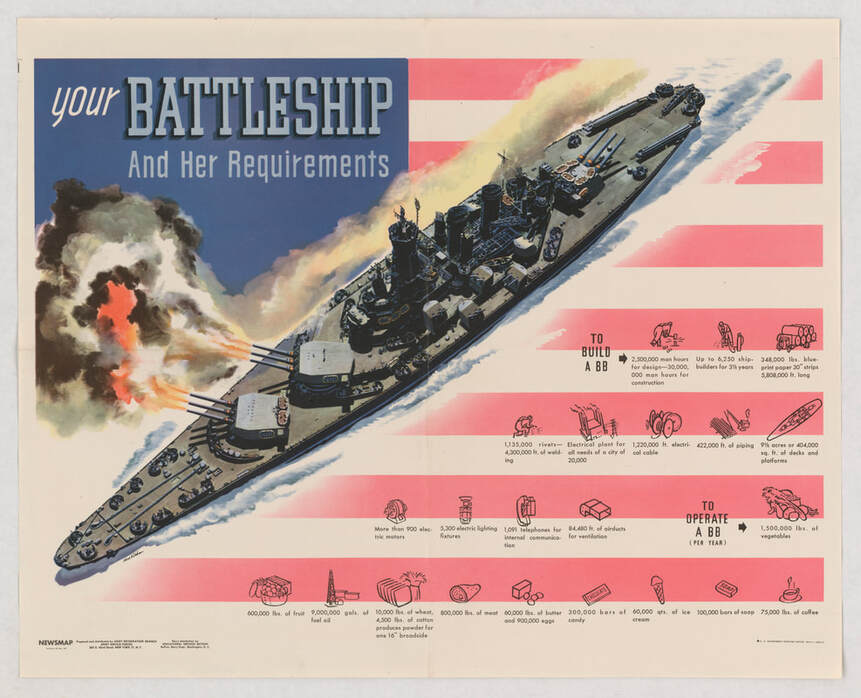

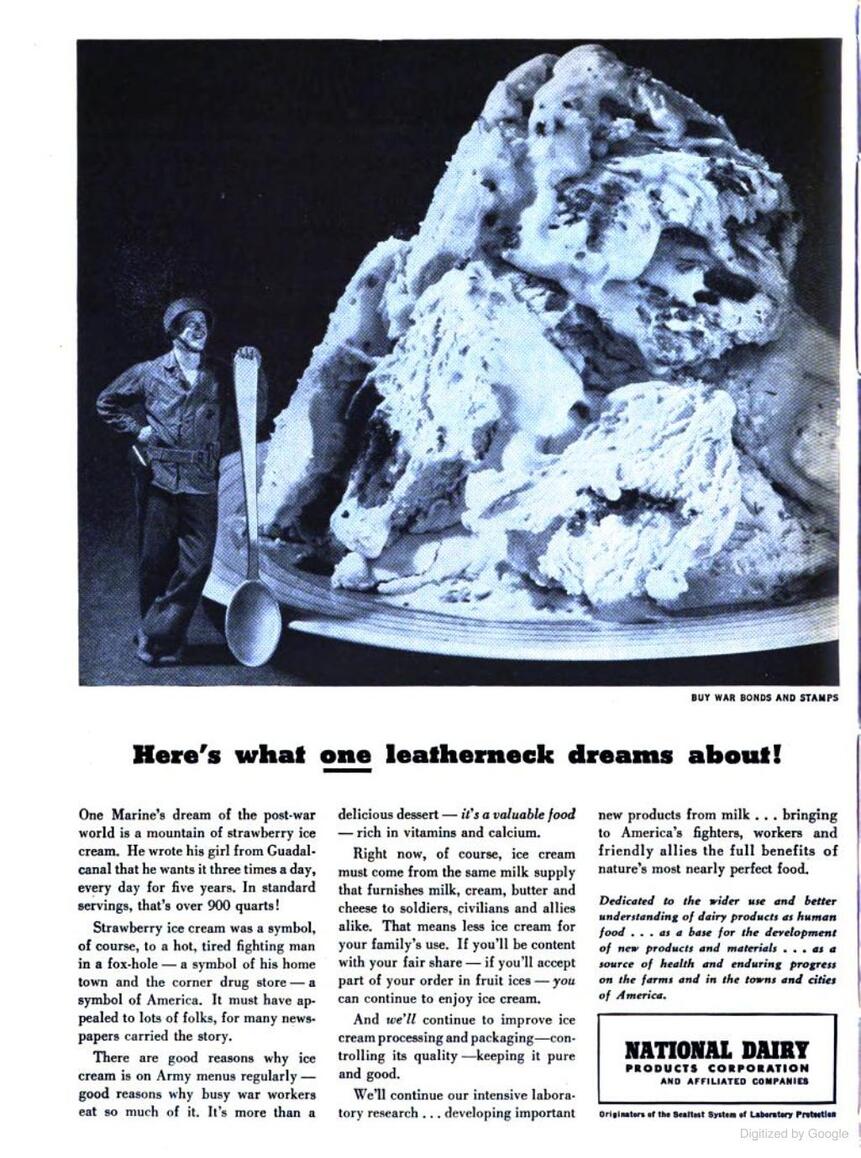
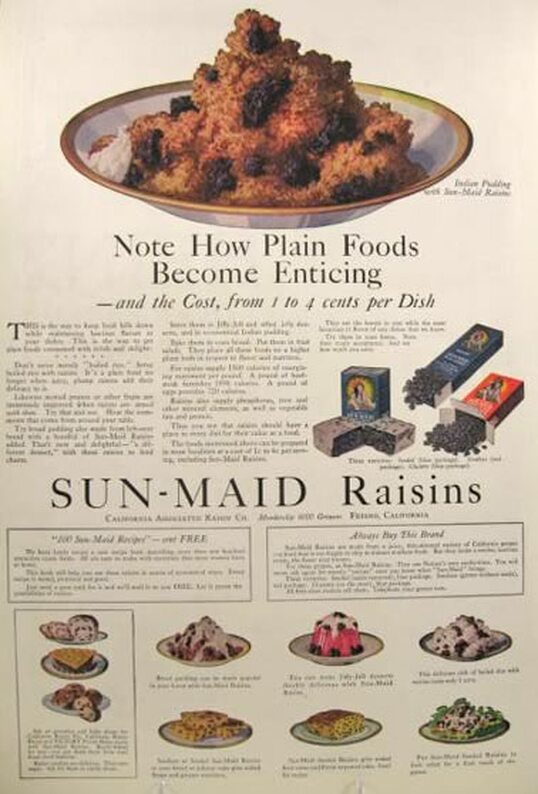
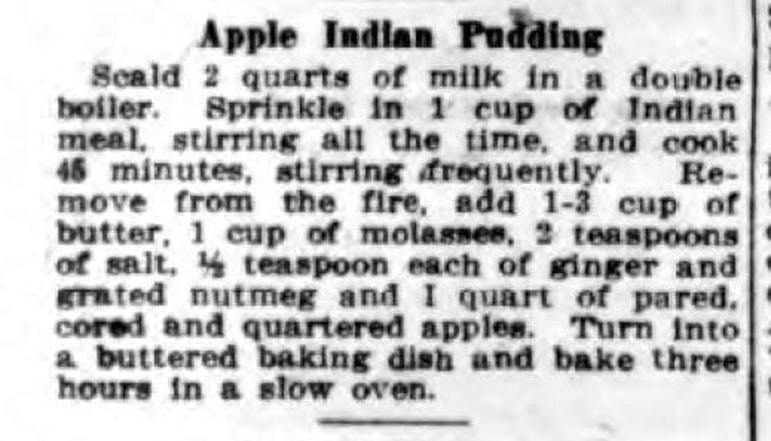
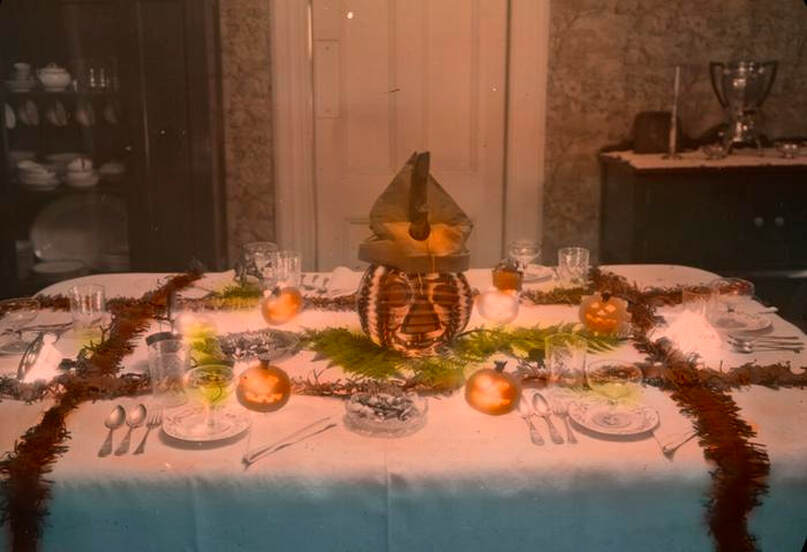
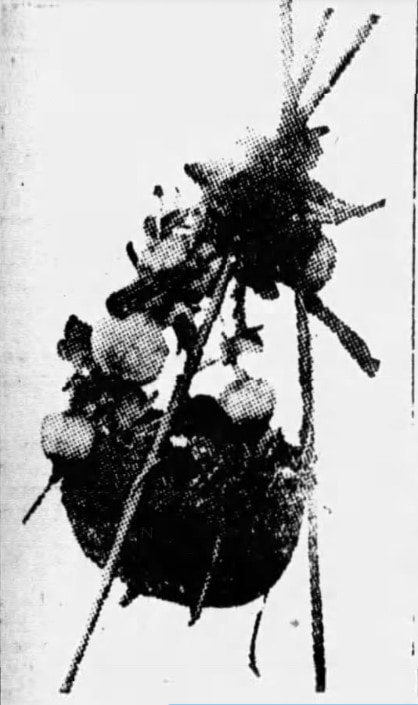

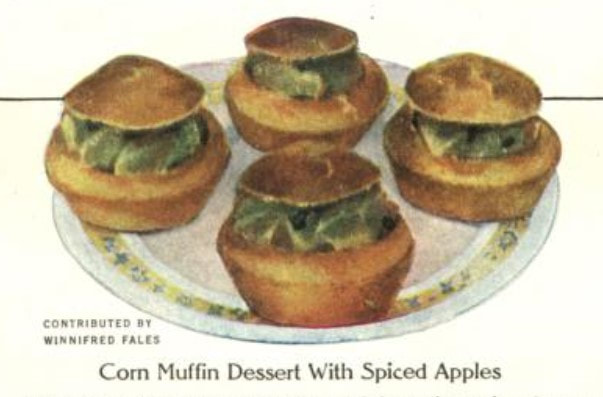
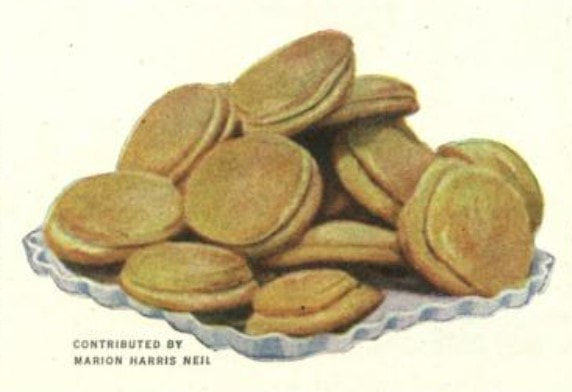

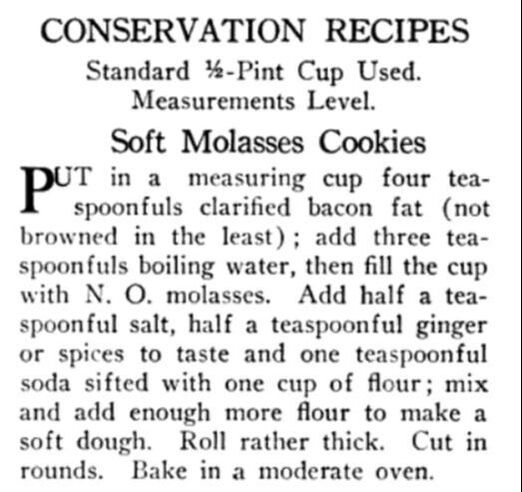
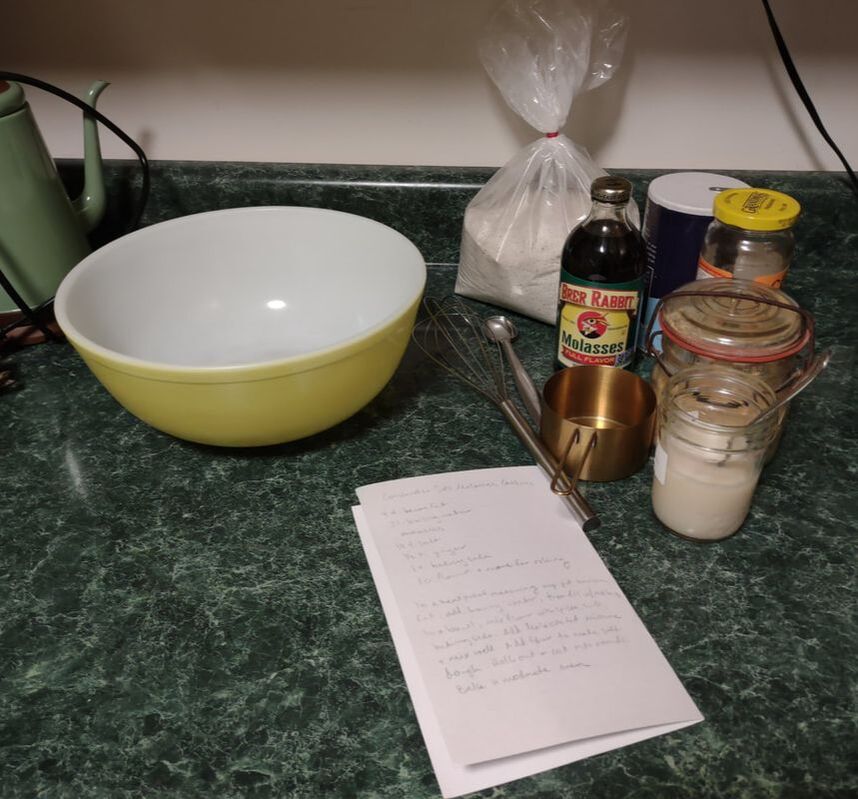
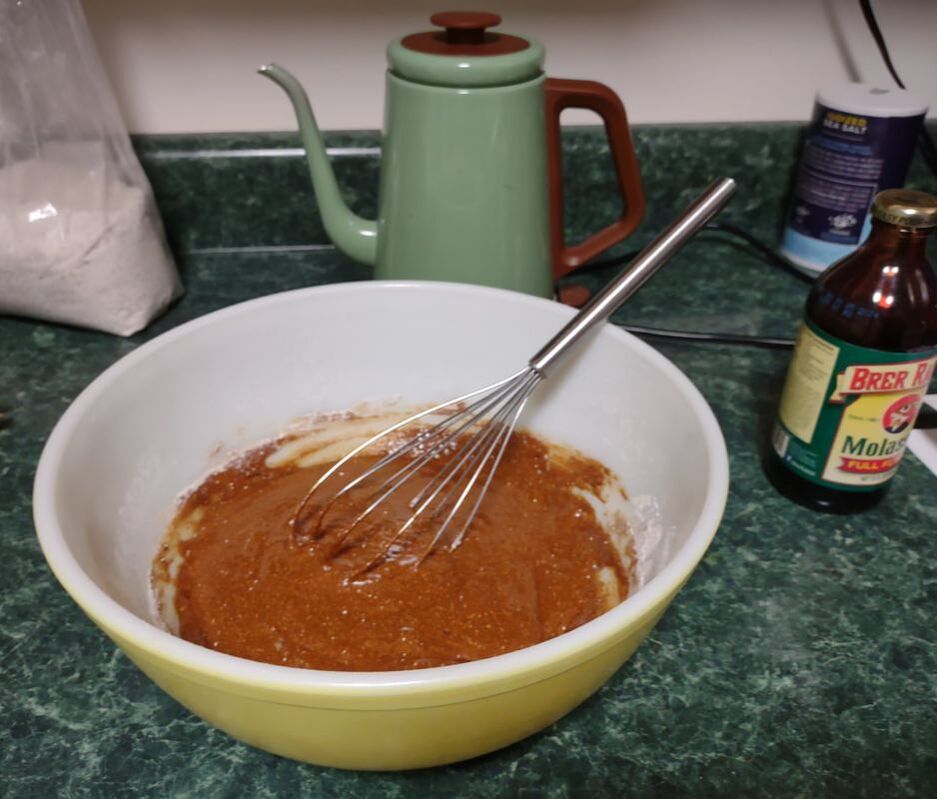
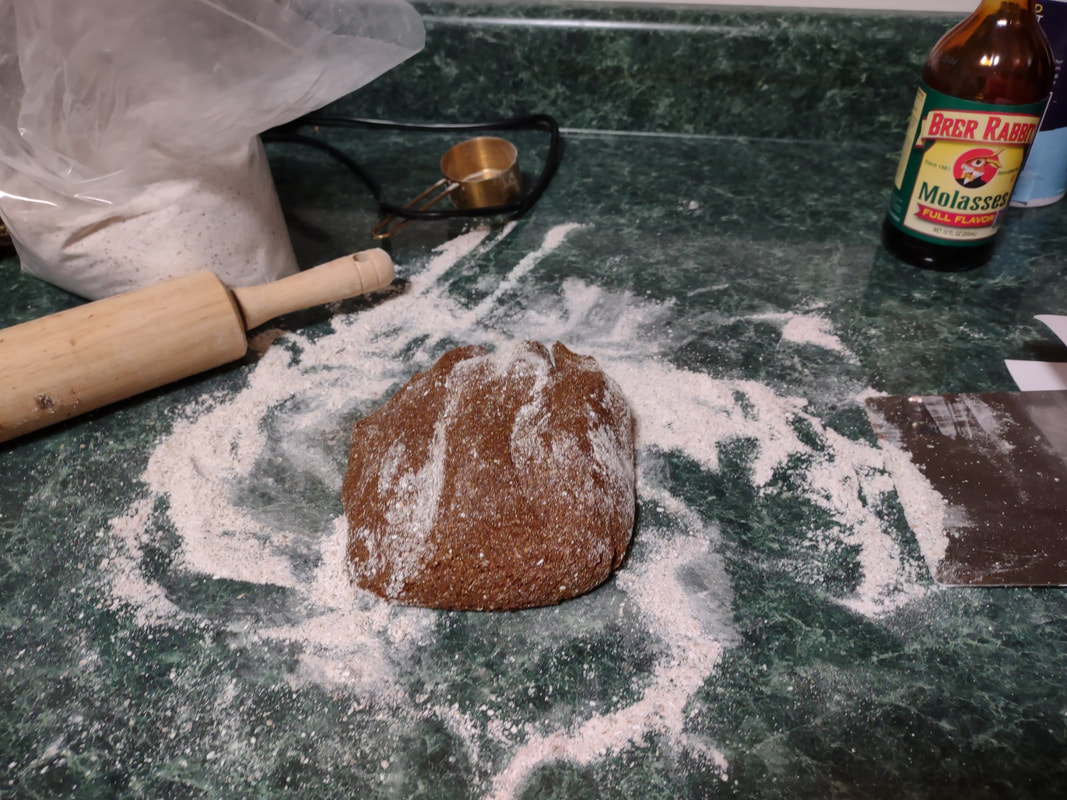

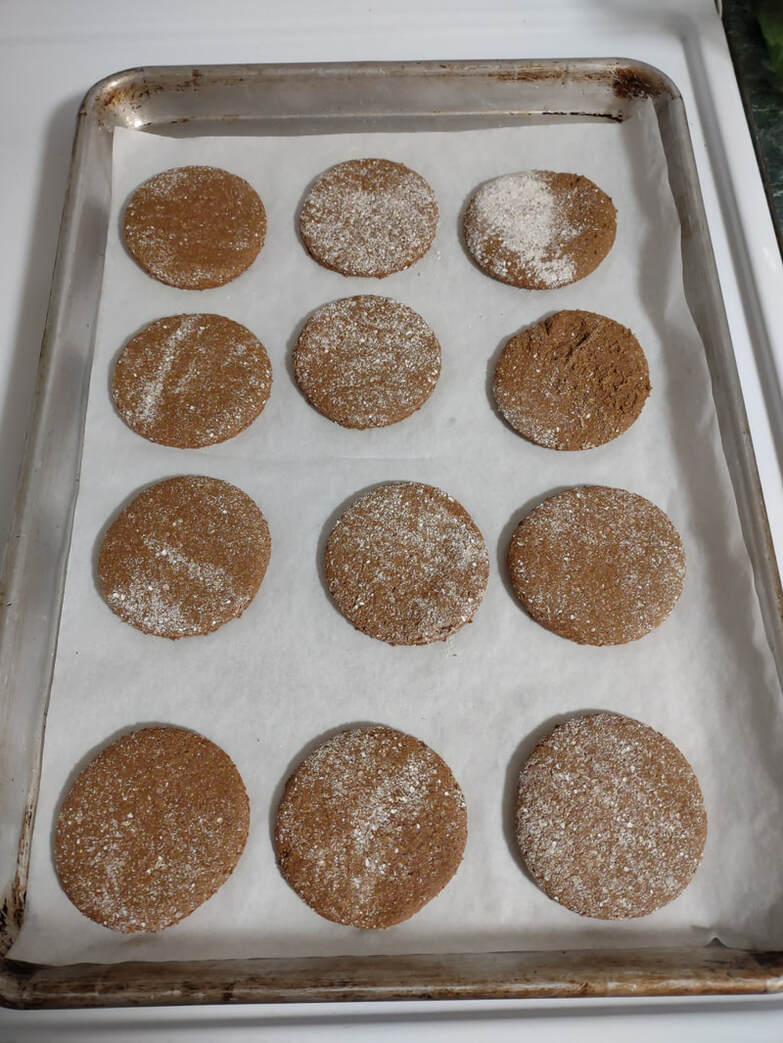
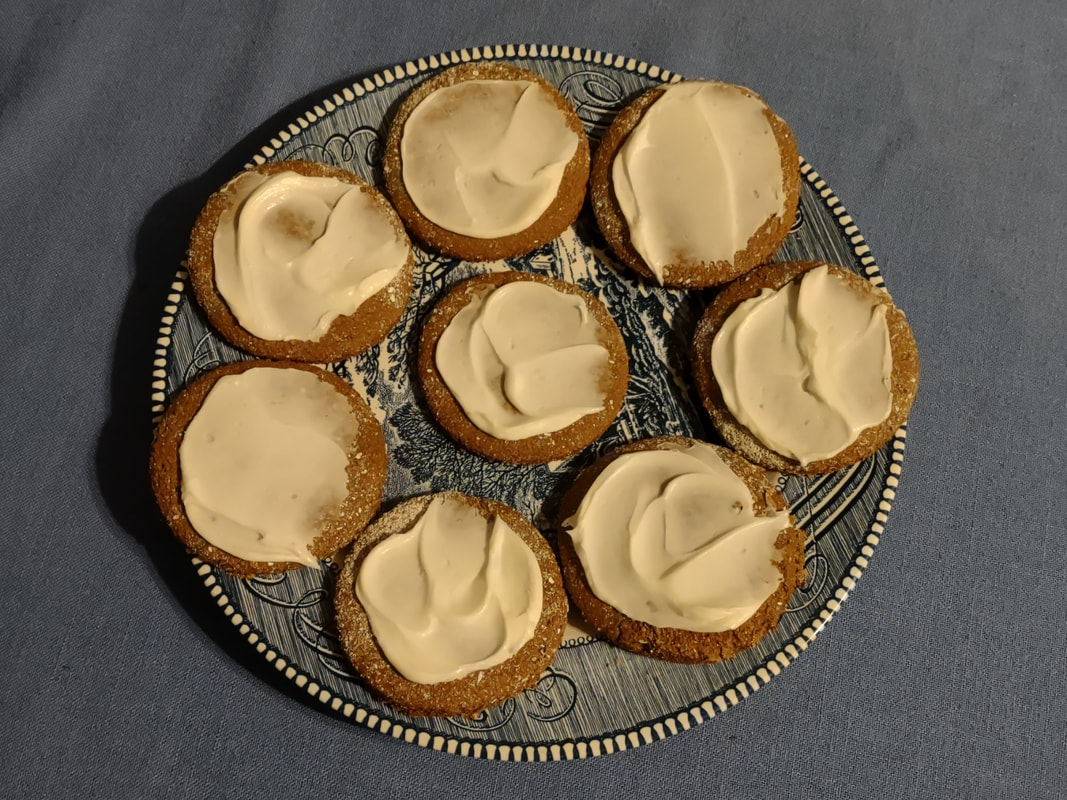
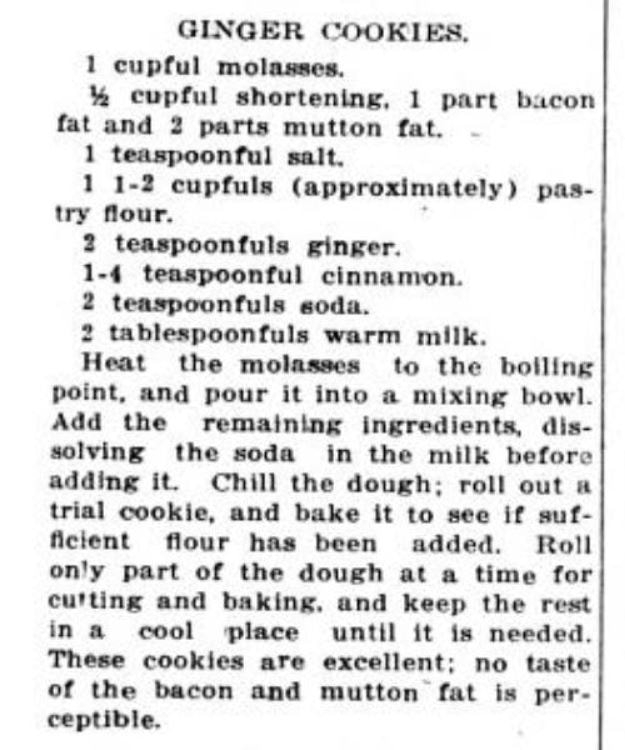


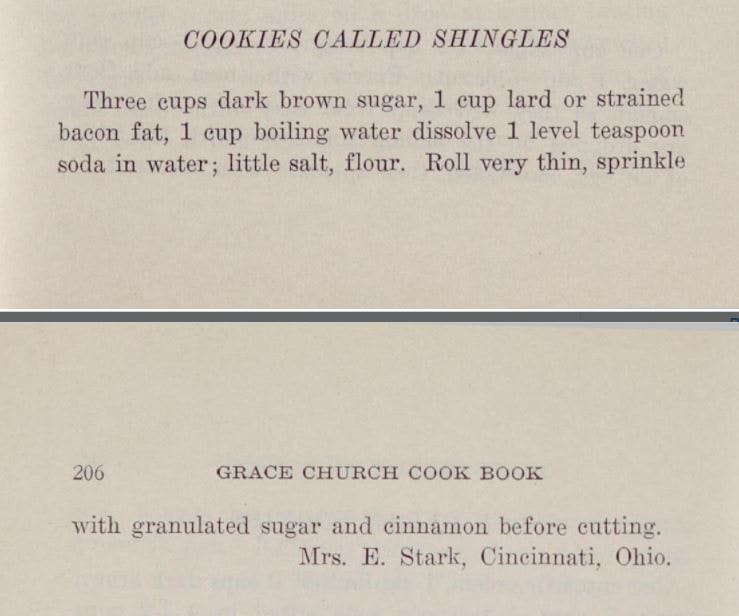
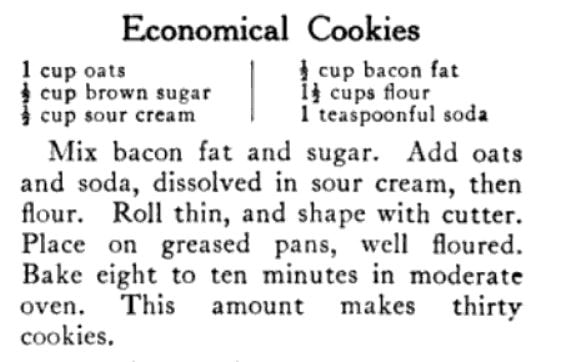

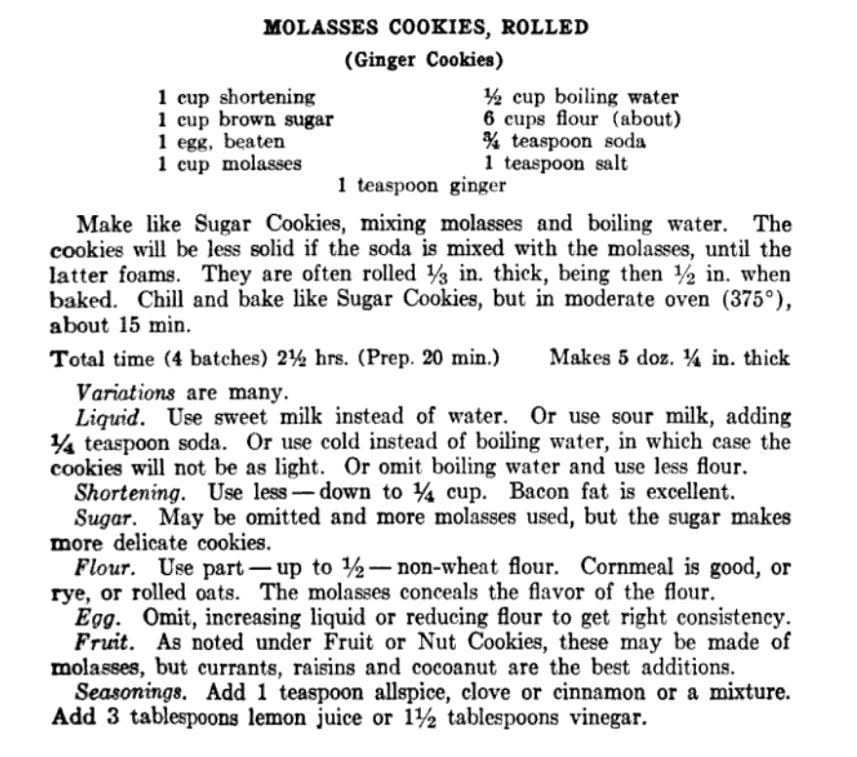


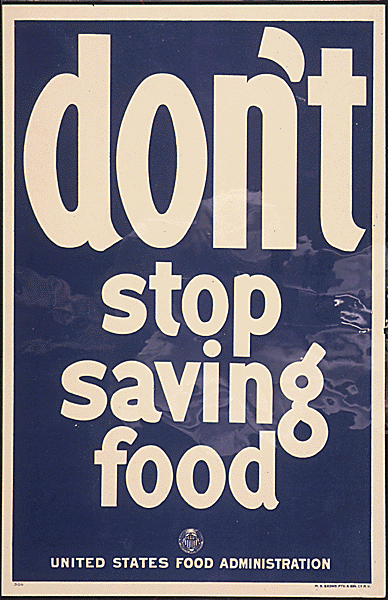

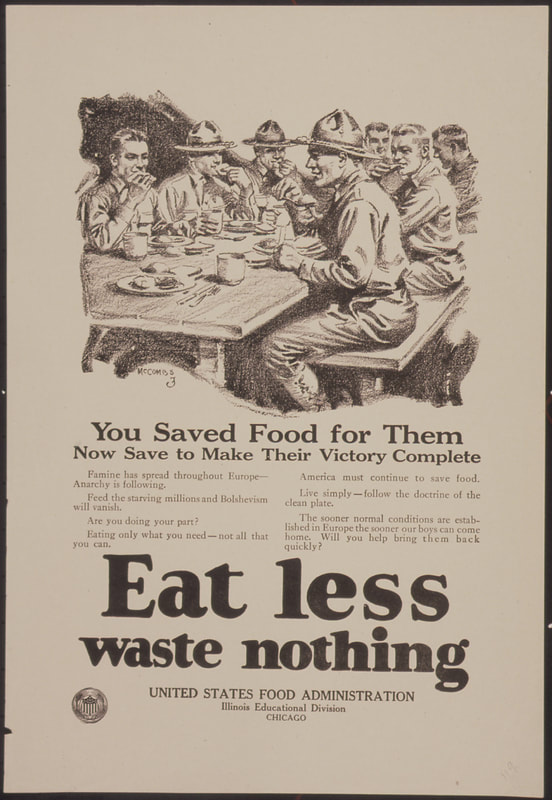
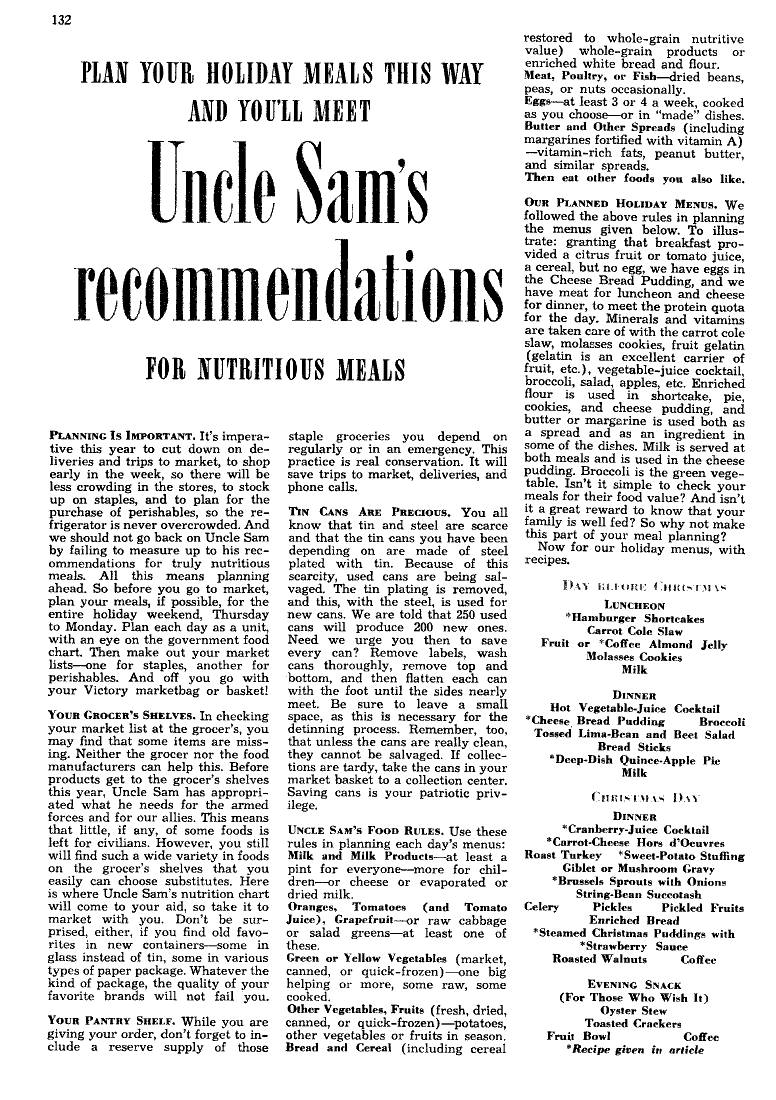
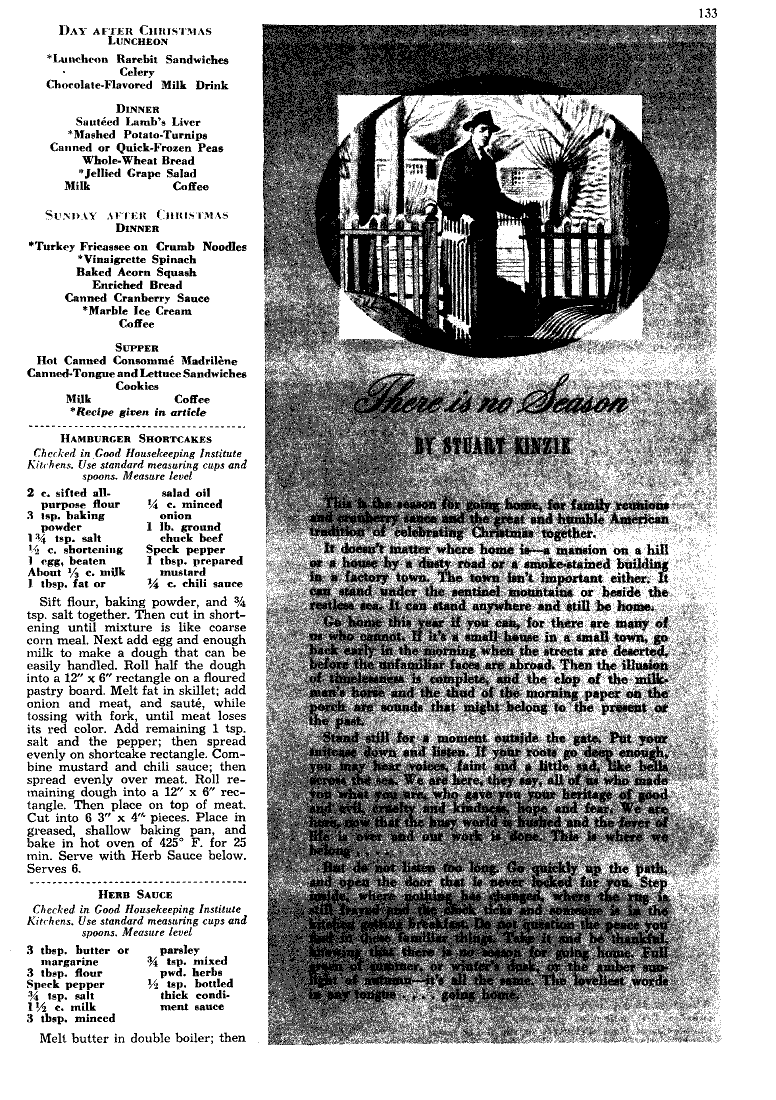
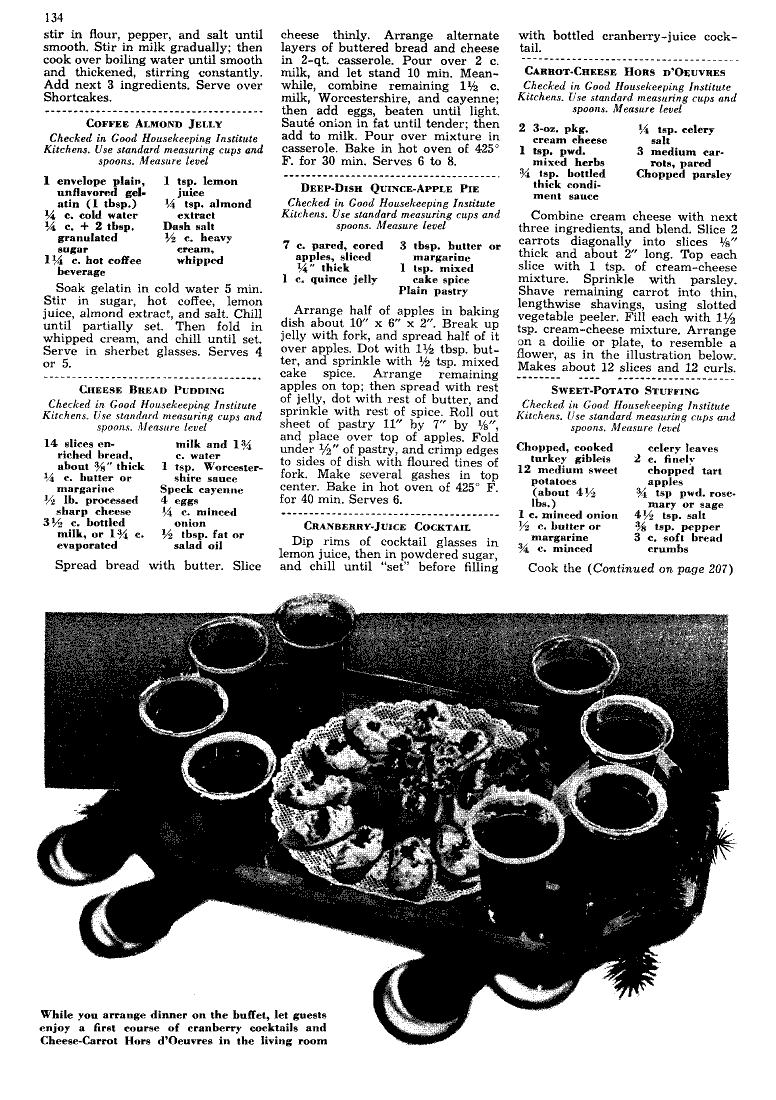
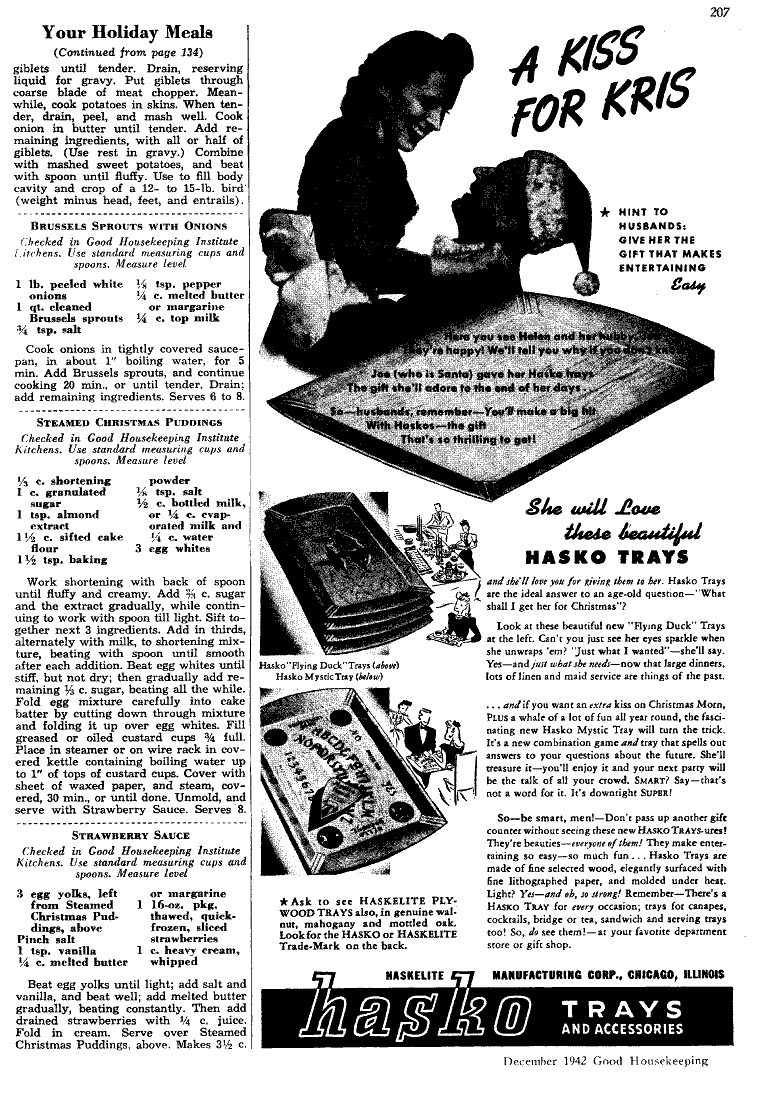
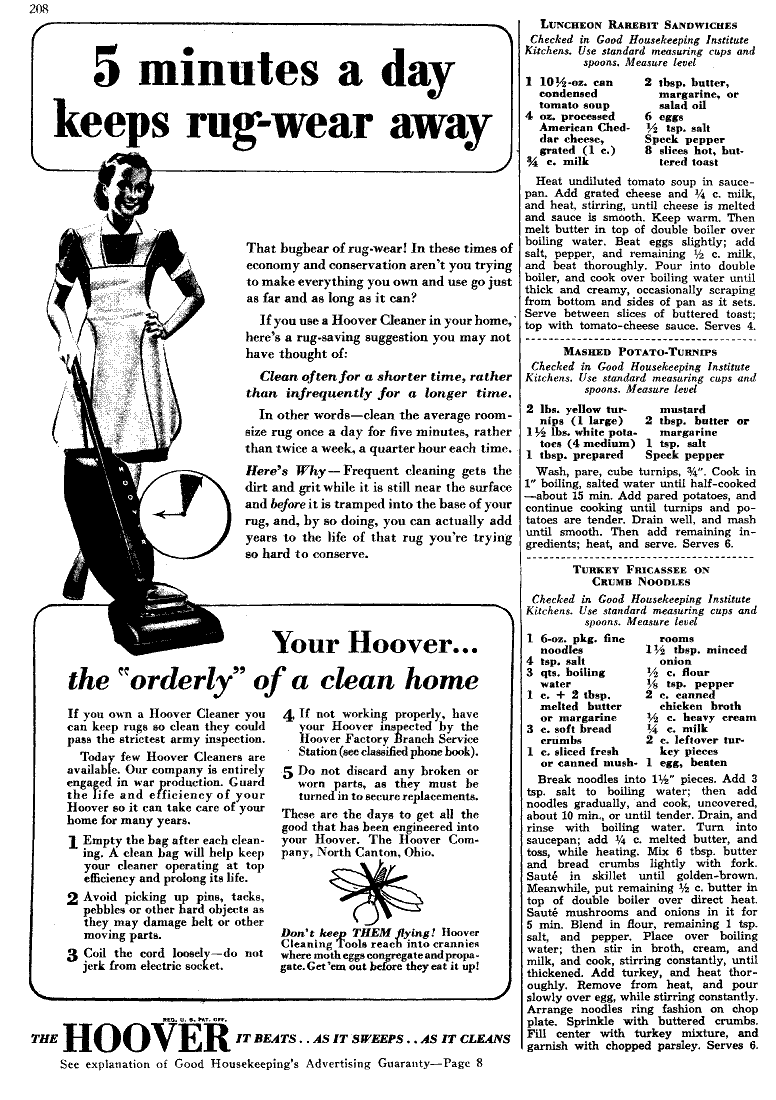
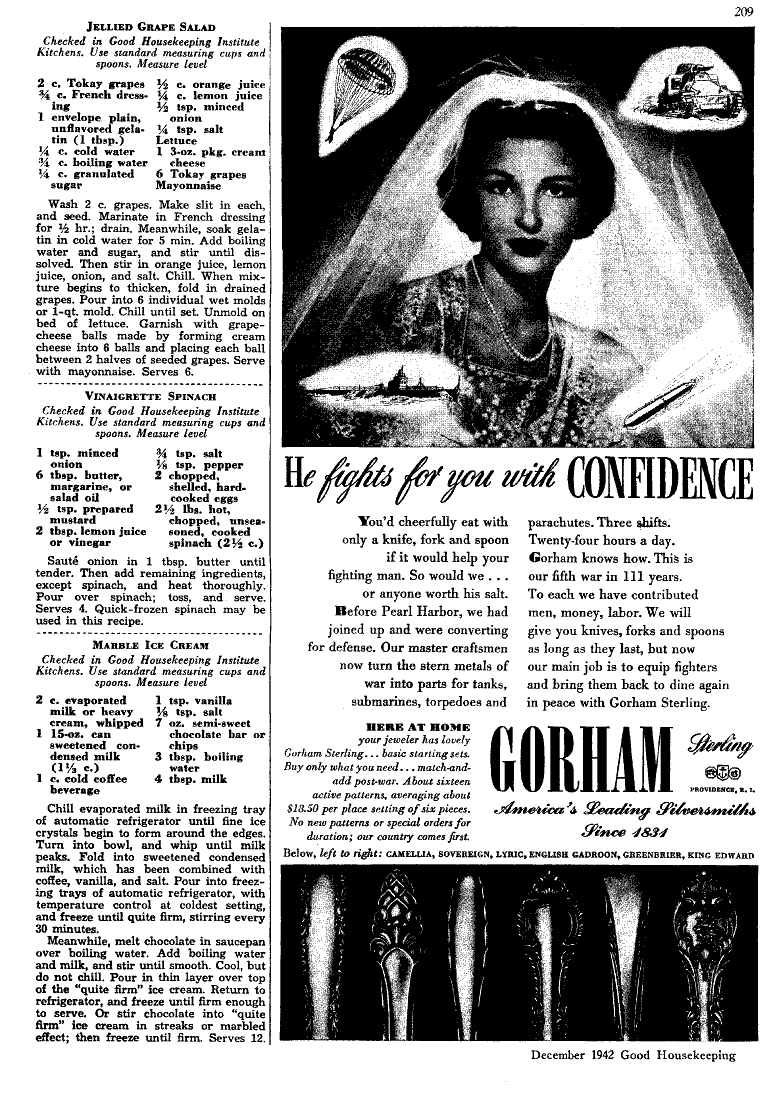

 RSS Feed
RSS Feed